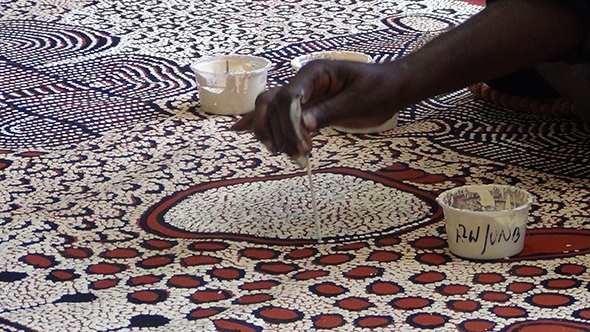Table of Contents
The variety of artwork throughout the globe indicates cultural diversity and the rich history that realities over time have recorded. Art has served as a means of expression, communication, storytelling, and trade throughout various parts of the world since humans first began developing the basic inklings of mimicking. Let’s explore the fascinating history and the context of aboriginal dot art, one of the fine arts that are still very popular today and has grown significantly in popularity in recent times.
History Of The Australian Aboriginal Dot Painting
The characteristic dot painting technique of contemporary aboriginal painters first appeared among Papunya Tula artists in the early 1970s. Artworks from Australia’s Central and Western Desert areas frequently use dotted painting techniques. Aboriginal people have made symbolic use of dots for a very long time in their artwork and other forms of expression. In ancient galleries, dots can be observed engraved in symbolic patterns. They were utilised for ceremonial body painting and sand paintings. The dot painting technique may have originated to provide a glittery appearance to a body design or to decorate an artefact. The dots may allude to an energetic field or strong aura around the pattern.
Tracing The Origins Of Aboriginal Dot Paintings
Due to a lack of textual references, one can’t put an exact date on when it all started, but it is safe to say that the origins of dot art have several distinct theories. Furthermore, aboriginal peoples are an umbrella concept, and they can be divided into several smaller communities with their own stories about the origins of the legendary art form.
Some Possible Explanations For Its Origins
Aboriginal Art Movement
The aboriginal art movement was a consequence of the legitimate concerns of hereditary artists that exposure of their symbolism developed by their ancestors to outsiders may lead to appropriation or misrepresentation of the artefacts on a global scale.
Furthermore, drawing a picture in the sand was previously not an issue because of its impermanence. Such practices were performed as this was the only form of communication available to them. However, the fact that acrylic paints are permanent led to worries about inadvertently disclosing sensitive information. As a result, overdotting became commonplace, masking any secret or sensitive information.
The Contemporaneous Drive
Linear and expressive dot art were fundamental components of the instructive sand drawings created primarily by the Central Desert people of Australia. As they transferred the stories onto the contemporary elements of paint and canvas, many of the Aboriginal painters of this region naturally evolved from traditional sand drawings to the dot style.
A Global Demand For Aboriginal Art
From the most minor, carefully organised markings on the canvas to wildly colourful, huge dotting, dot paintings come in different sizes and styles. Some painters combine their dots into lines or large, connected sections. To qualify as a dot painting, the technique used to create the painting must repeatedly leave dot markings on the canvas. This might be done using a dotting stick, brush coated in paint, or another tool.
Dot painting encouraged many Aboriginal artists to create their dotting techniques, much like any other art form. Like any ritualistic practice, this art form is passed on from generation to generation, making dot paintings one of the most well-known Aboriginal artworks in contemporary times.
Final Words
Although aboriginal dot art has been around for a while, its relevance has only grown with time. Global access to the art form has enabled viewing pleasure and made bidding at auctions from virtually anywhere feasible. Aboriginal art form represents a unique history, and owning an original piece of art will be a dream come true!
Author
Hannah Gilbert





No Comments